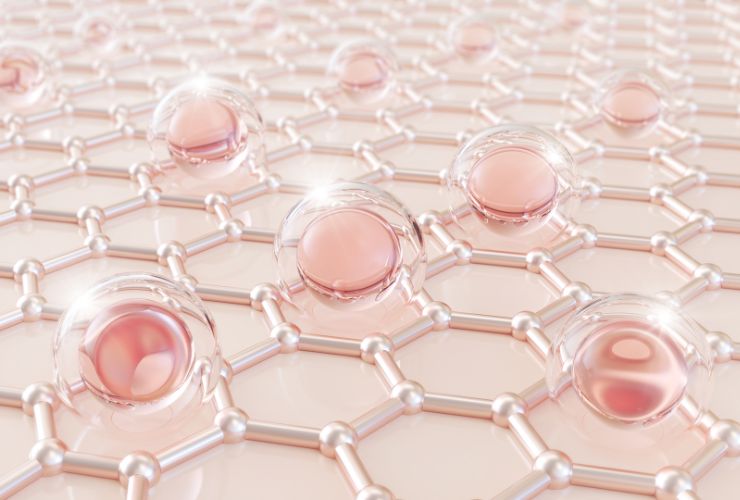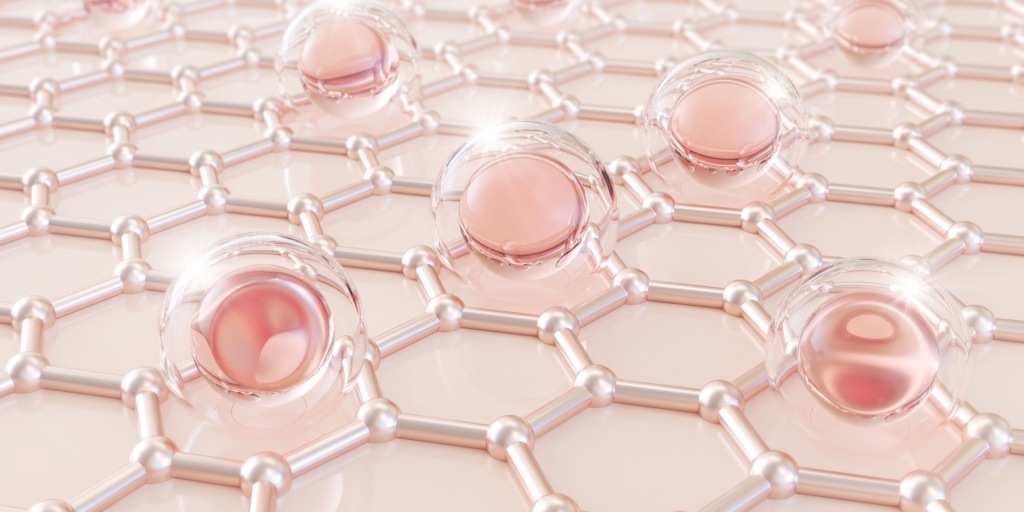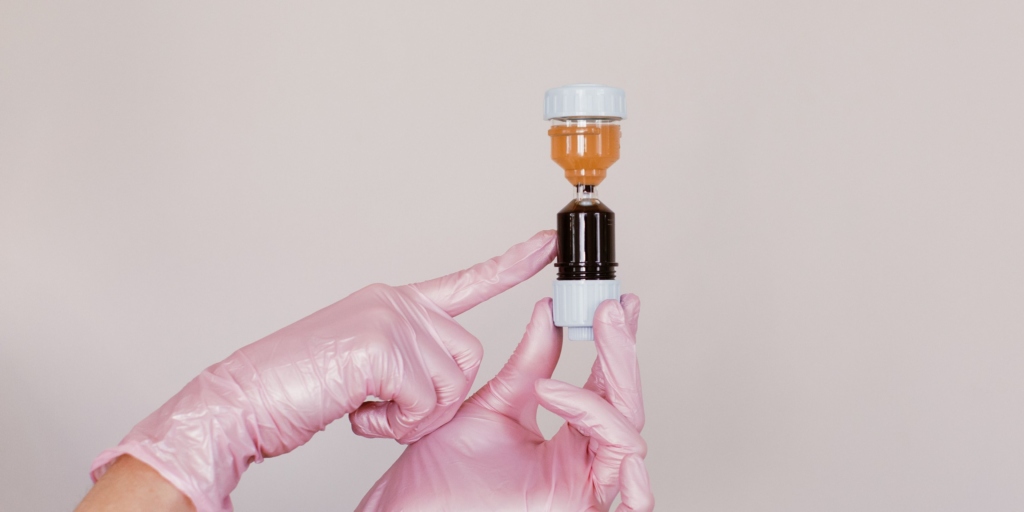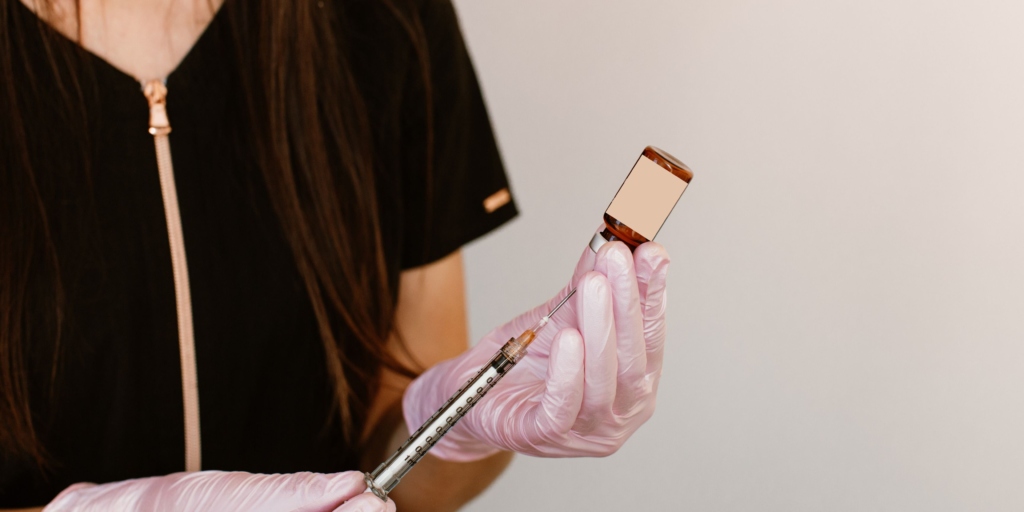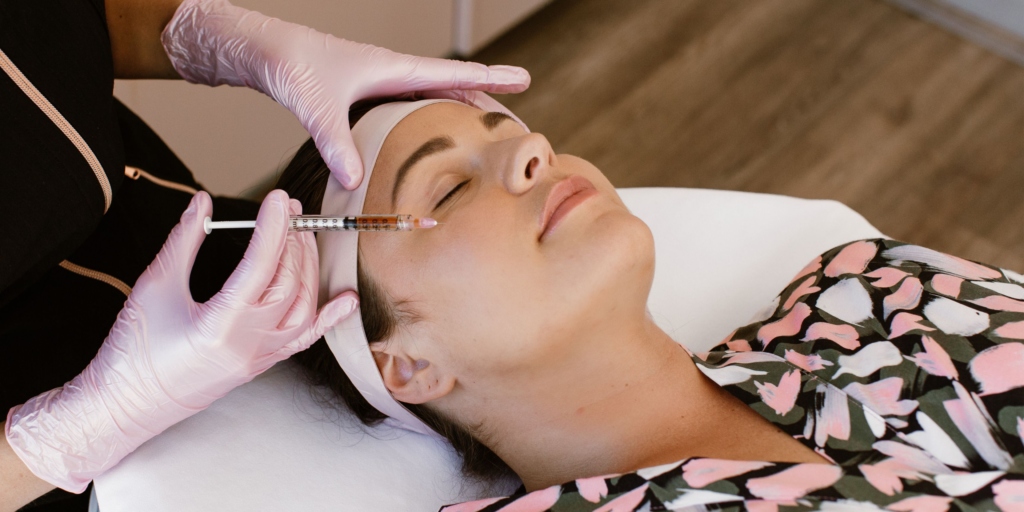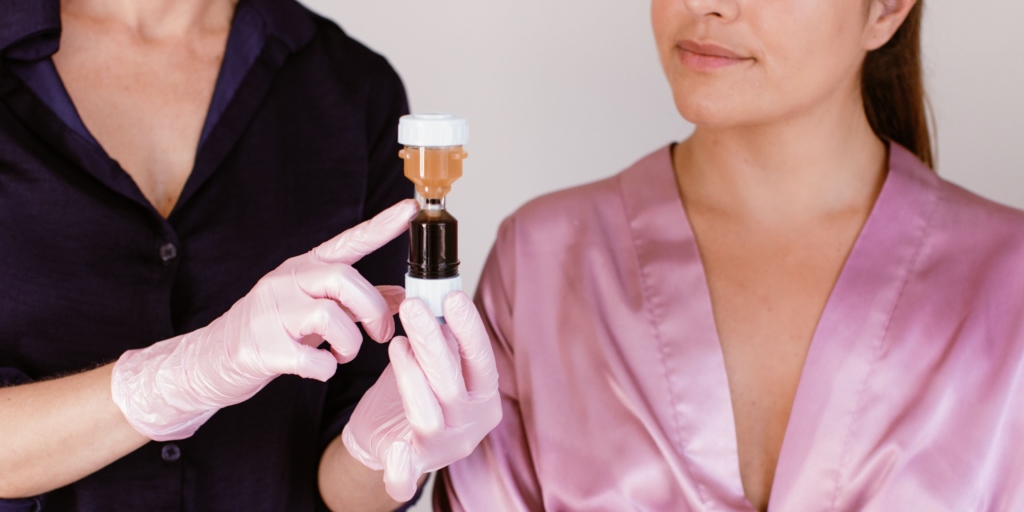by Skincare Specialist, Claire Roux
As regenerative skincare continues to evolve, exosomes and growth factors have become powerful tools in personalised skin rejuvenation – each with their own unique benefits. The rise of regenerative medicine in aesthetic skincare has led to innovative treatments that harness the body’s natural healing processes. At Dr Nerina Wilkinson + Associates, we stay at the forefront of cutting-edge skincare science, offering advanced solutions for skin health and beauty.
Regenerative medicine focuses on repairing, replacing, and regenerating damaged tissues and organs. In the realm of aesthetic skincare, this approach has opened up new possibilities for achieving youthful, radiant skin. By leveraging the body’s natural healing mechanisms, regenerative skincare treatments can address a wide range of skin concerns, from aging and dullness to inflammation and pigmentation.
In this blog, we’ll discover the difference between exosomes and growth factors in skincare. Learn how these regenerative actives work, their ideal applications, and which is right for your skin.
Table of contents
- What Are Growth Factors in Skincare?
- What Are Exosomes in Skincare?
- Key Differences between Exosomes and Growth Factors
- Importance of Advanced Actives in Skincare
- Which one is right for you?
- Your Skin Rejuvenation Journey
What Are Growth Factors in Skincare?
Growth factors are proteins that play a crucial role in skin repair, regeneration, and collagen stimulation. They are often lab-derived or harvested from human stem cells. These proteins are naturally present in the body and are involved in various cellular processes, including cell growth, differentiation, and survival.
Definition and Origin
Growth factors can be sourced from different origins, including fibroblast-derived and platelet-derived growth factors. Fibroblast-derived growth factors are produced by fibroblasts, which are cells found in the connective tissue of the skin. These growth factors help stimulate collagen production and promote skin repair. Platelet-derived growth factors, on the other hand, are obtained from platelets in the blood. Treatments like platelet-rich plasma (PRP) therapy utilize these growth factors to enhance skin rejuvenation.
Role in Skin Repair and Regeneration
Growth factors play a vital role in skin repair and regeneration. They help accelerate the healing process by promoting the proliferation and migration of skin cells. Additionally, growth factors stimulate the production of collagen and elastin, which are essential for maintaining skin elasticity and firmness. This makes them particularly effective in treating aging skin, reducing fine lines and wrinkles, and improving overall skin texture.
Common Sources and Applications
Growth factors are commonly used in various skincare products and treatments. They can be found in serums, creams, and masks designed to boost skin renewal and improve its appearance. In professional treatments, growth factors are often combined with other modalities, such as microneedling or laser therapy, to enhance their effectiveness. These treatments can help address specific skin concerns, such as post-procedure healing, dullness, and signs of aging.
What Are Exosomes in Skincare?
Exosomes are extracellular vesicles released by stem cells, acting as “messenger molecules” in cell communication and regeneration. These tiny vesicles are packed with proteins, lipids, and RNAs that facilitate cellular repair and rejuvenation.
Definition and Function
Exosomes are produced by various types of cells, including stem cells, and play a crucial role in intercellular communication. They transfer bioactive molecules from one cell to another, influencing the behavior of recipient cells. This process is essential for maintaining tissue homeostasis and promoting regeneration.
Role in Cell Communication and Regeneration
Exosomes act as carriers of important signaling molecules that regulate cellular functions. They can modulate immune responses, reduce inflammation, and promote tissue repair. In skincare, exosomes are used to enhance skin regeneration, improve texture, and address pigmentation issues. Their ability to deliver targeted messages to cells makes them a powerful tool in advanced skin treatments.
Emerging Role in Advanced Skin Treatments
The use of exosomes in skincare is relatively new but rapidly gaining popularity. Research has shown that exosomes can significantly improve skin health by promoting collagen production, reducing inflammation, and accelerating healing. They are particularly effective in treating inflammatory conditions, pigmentation, and overall skin rejuvenation. As the understanding of exosomes continues to grow, their applications in skincare are expected to expand further.
Key Differences between Exosomes and Growth Factors
While both exosomes and growth factors are integral to regenerative skincare, they serve different functions and offer unique benefits. Let’s take a look at the key differences between the two.
Functional Differences
Growth factors primarily stimulate collagen production and skin repair, making them ideal for aging skin and post-procedure healing. They work by promoting the proliferation and migration of skin cells, which helps accelerate the healing process and improve skin texture.
Exosomes, on the other hand, excel in treating inflammatory conditions, pigmentation issues, and enhancing overall skin regeneration. They act as carriers of bioactive molecules that regulate cellular functions, reduce inflammation, and promote tissue repair. This makes them particularly effective in addressing skin concerns that require targeted cell communication and regeneration.
Ideal Applications in Skincare
The choice between growth factors and exosomes depends on specific skin concerns and treatment goals. Growth factors are best suited for aging skin, dullness, and post-procedure healing. They can help reduce fine lines and wrinkles, improve skin texture, and accelerate recovery after aesthetic treatments.
Exosomes are ideal for treating inflammatory conditions, pigmentation issues, and promoting collagen repair. They can help reduce redness and inflammation, improve skin tone, and enhance overall skin health. Combining treatments, such as microneedling with exosomes or laser therapy with growth factors, can optimize results and address multiple skin issues simultaneously.
When to Use Growth Factors VS Exosomes
Choosing between growth factors and exosomes depends on specific skin concerns and treatment goals. Here are some guidelines to help determine the best option for your skin:
When to Use Growth Factors
- Aging Skin: Growth factors are effective in reducing fine lines and wrinkles, improving skin texture, and promoting collagen production. They can help rejuvenate aging skin and restore its youthful appearance.
- Dullness: Growth factors can enhance skin renewal and improve its radiance. They help stimulate the proliferation of skin cells, resulting in a brighter and more vibrant complexion.
- Post-Procedure Healing: Growth factors can accelerate the healing process after aesthetic treatments, such as microneedling or laser therapy. They promote skin repair and reduce downtime, allowing for faster recovery.
When to Use Exosomes
- Inflammatory Conditions: Exosomes are effective in reducing inflammation and redness. They can help soothe irritated skin and improve its overall health.
- Pigmentation: Exosomes can address pigmentation issues by promoting skin regeneration and improving skin tone. They help reduce dark spots and uneven pigmentation, resulting in a more even complexion.
- Accelerated Healing: Exosomes can enhance the healing process by promoting tissue repair and reducing inflammation. They are particularly effective in treating wounds and scars.
- Collagen Repair: Exosomes can stimulate collagen production and improve skin elasticity. They help restore the skin’s firmness and reduce signs of aging.
Importance of Advanced Actives in Skincare
The use of advanced actives in skincare is essential for achieving optimal skin health and beauty. Exosomes and growth factors offer unique benefits that can significantly improve the appearance and condition of your skin. Incorporating these actives into your skincare regimen can help you achieve a more youthful, radiant complexion.
Which one is right for you?
Personalised treatment planning is essential to determine the best regenerative solution for your skin. At Dr Nerina Wilkinson + Associates, our expert consultations help tailor treatments to your unique needs, ensuring innovative and results-driven skincare. Remember, every individual’s skin is unique, and a one-size-fits-all approach will not yield the best results, therefore, personalised treatment planning is essential to achieve the results you desire.
Your Skin Rejuvenation Journey
To explore how these cutting-edge treatments can benefit you, we encourage you to book a professional skin consultation. Our expert skincare specialists will assess your skin with state-of-the-art technology and recommend the most suitable treatments based on your unique needs and goals. This personalized approach ensures that you receive the best possible care and achieve the desired results.
Interested in discovering what regenerative skincare can do for you? Book a consultation with one of our expert Skincare Specialists today and rediscover your most radiant self
Written by Skincare Specialist, Claire Roux

